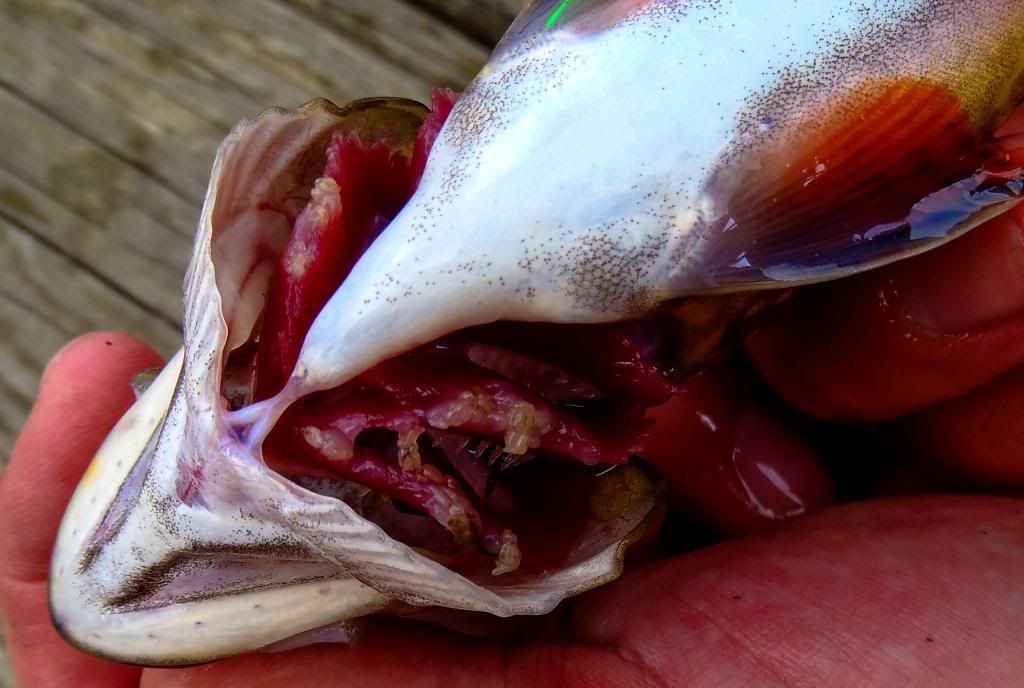 Gill Lice
Gill Lice

I fish the southwestern corner of Wisconsin. The counties I frequent are Vernon, Crawford, Richland and Grant counties. Eleven years ago I caught a beautiful brook trout and it had some things attached to the gills. I took a photo of the gill section and forwarded it to numerous WDNR staff. I received responses from three fisheries folks right away. Mike Staggs, Gene Van Dyck and Dave Vetrano all told me about Gill Lice.
Gill lice (a parasitic copepod called Salmincola edwarsii) can cause significant physical trauma to the gill filaments, causing deformities which affect respiration and the efficient uptake of oxygen and the release of carbon dioxide, ammonia and other metabolites. Fish that are heavily infected cannot obtain sufficient oxygen when they are exercised, such as when they are caught by angling. Gill lice only attack Brook Trout.
Matthew Mitro, a coldwater fisheries research scientist for the DNR, said the fall shocking crews are out and about and will report on any declines in populations -- and also the water levels -- they might find.
I also contacted Susan Marcquenski the WDNR's fish disease specialist. I was concerned and asked her if the streams with gill lice in them should be closed. She answered with an emphatic "NO." She said rather than not fish the streams where gill lice are present, she would encourage people to fish and take fish home (reduce the density of the fish) as long as the fishing regulations allow this. Gill Lice are not dangerous to humans. Anything that can be done to keep water moving (faster velocity) may also help reduce the probability of larvae to successfully attach to fish. Beaver dams are breeding grounds for the parasite and all beaver dams need to be reported to your local fish manager.
This winter Matt Mitro contacted me again. He and his shocking crew had been at Ash Creek in Richland County in Fall 2012. His finding were very bad. Ash Creek is where the state has its nursery for the feral brook trout program. The brook trout population in that stream had taken a significant hit in population due to the Gill Lice. Matt took the photo attached. Matt wants the word out on Gill Lice and says please look at the photo and report any Gill Lice you find.
Since our conversation Trout Unlimited has put this Gill Lice reporting area on its website:
http://wisconsintu.org/Survey/tabid/468/Default.aspx
The treatment for Gill Lice is to individually dunk trout in a solution. The only problem with that is they can go right back in population and be re-infested. Gill Lice can be transferred by anglers on their gear from one stream to the next. The WDNR recommends that angler clean their gear with a bleach solution. One tablespoon of bleach to every gallon of water. This is to be sprayed on your gear prior to going to another stream. The WDNR says felt wading bottom boots are terrible for wading and infecting other streams.
When you arise in the morning, think of what a
precious privilege it is to be alive - to breathe, to think,
to enjoy, to love.
- Marcus Aurelius





 Reply With Quote
Reply With Quote